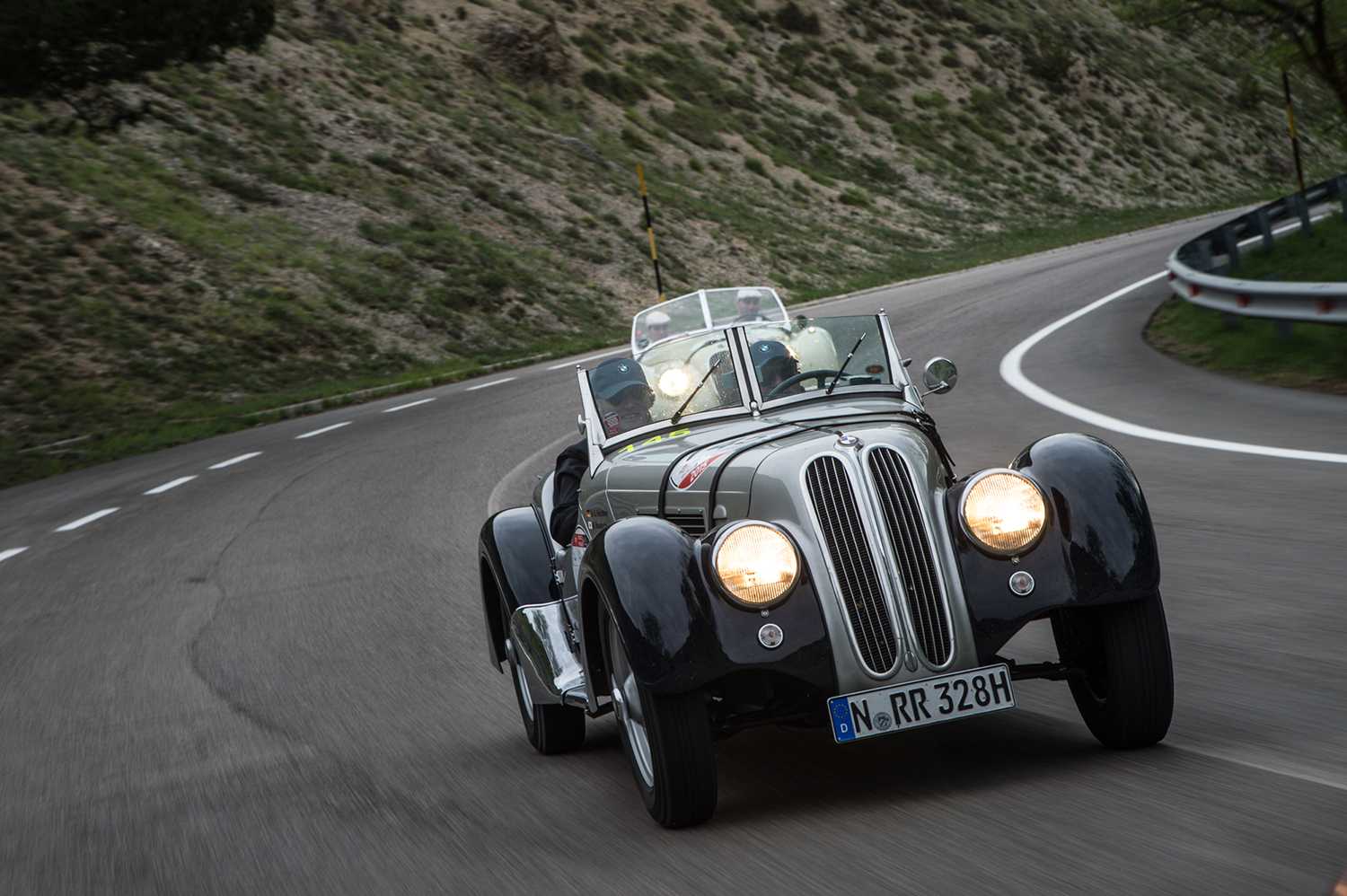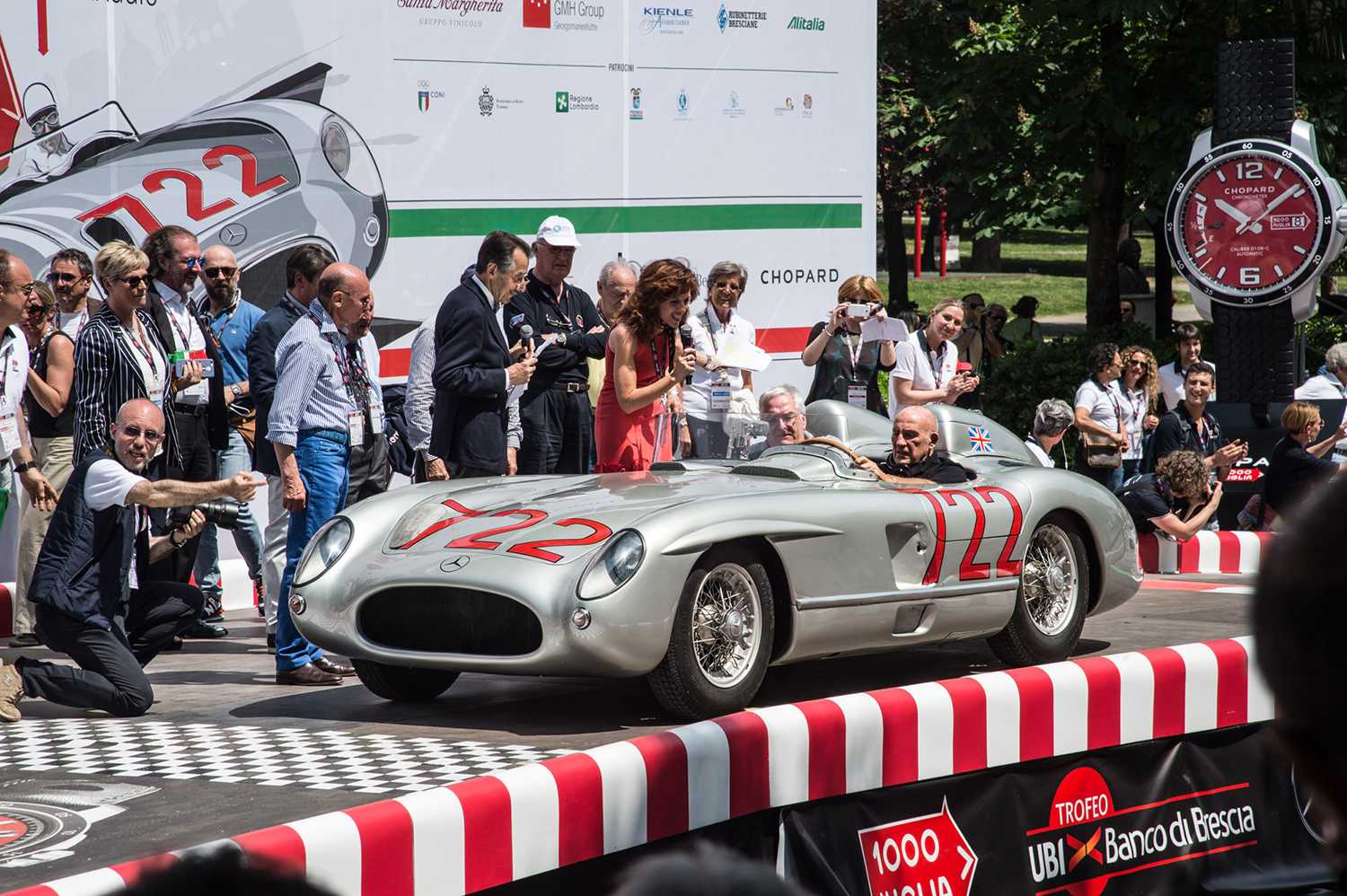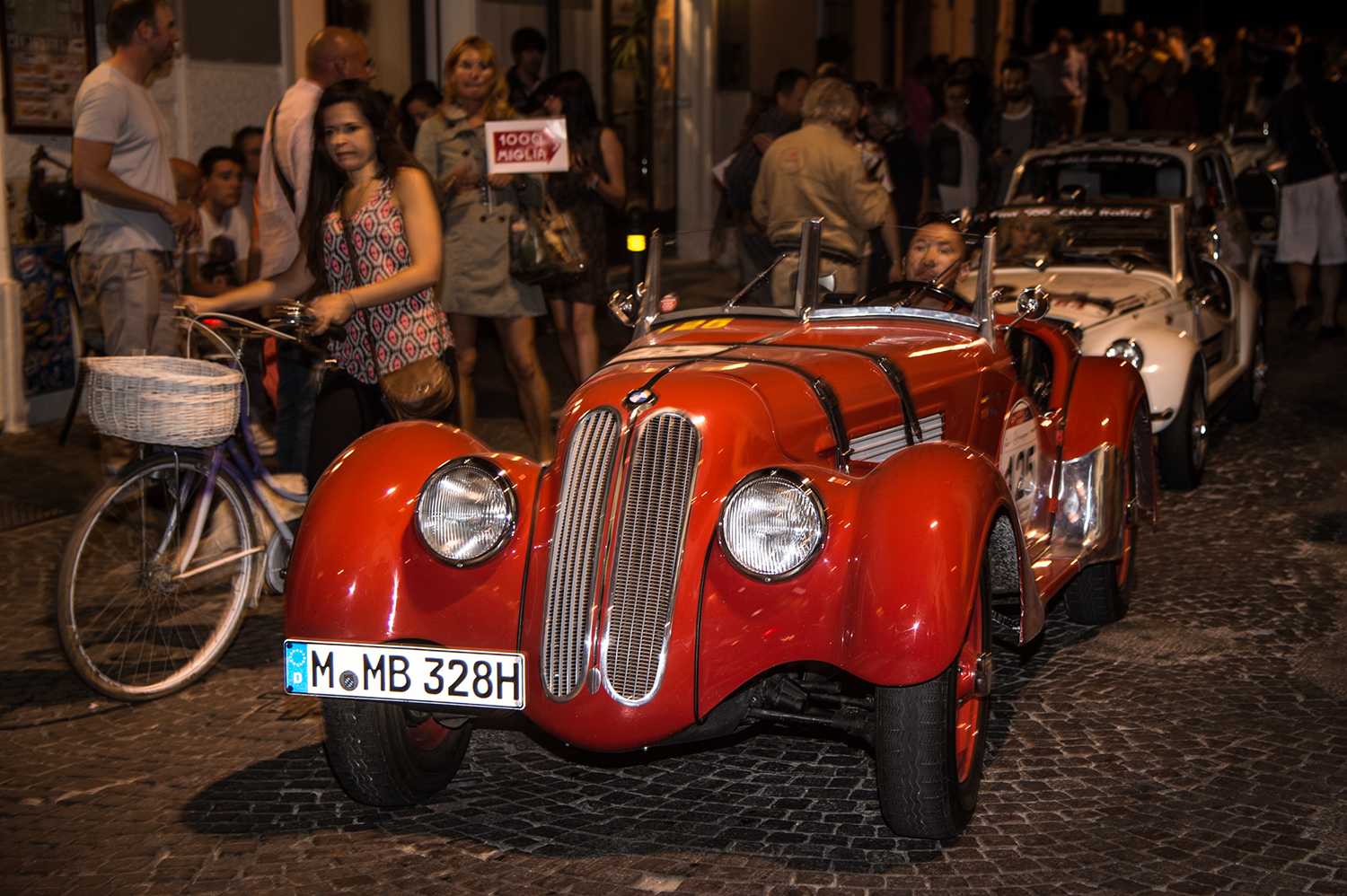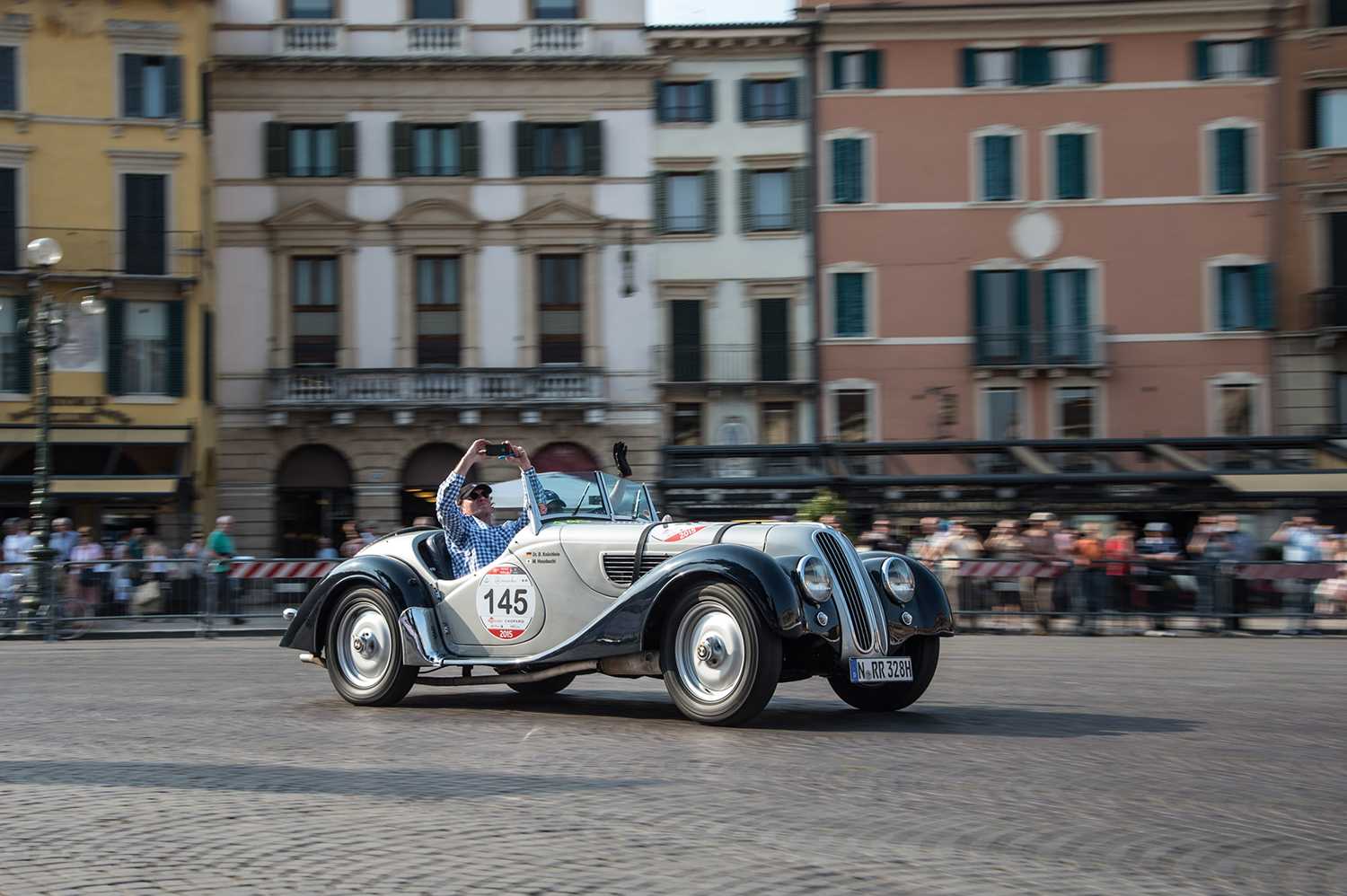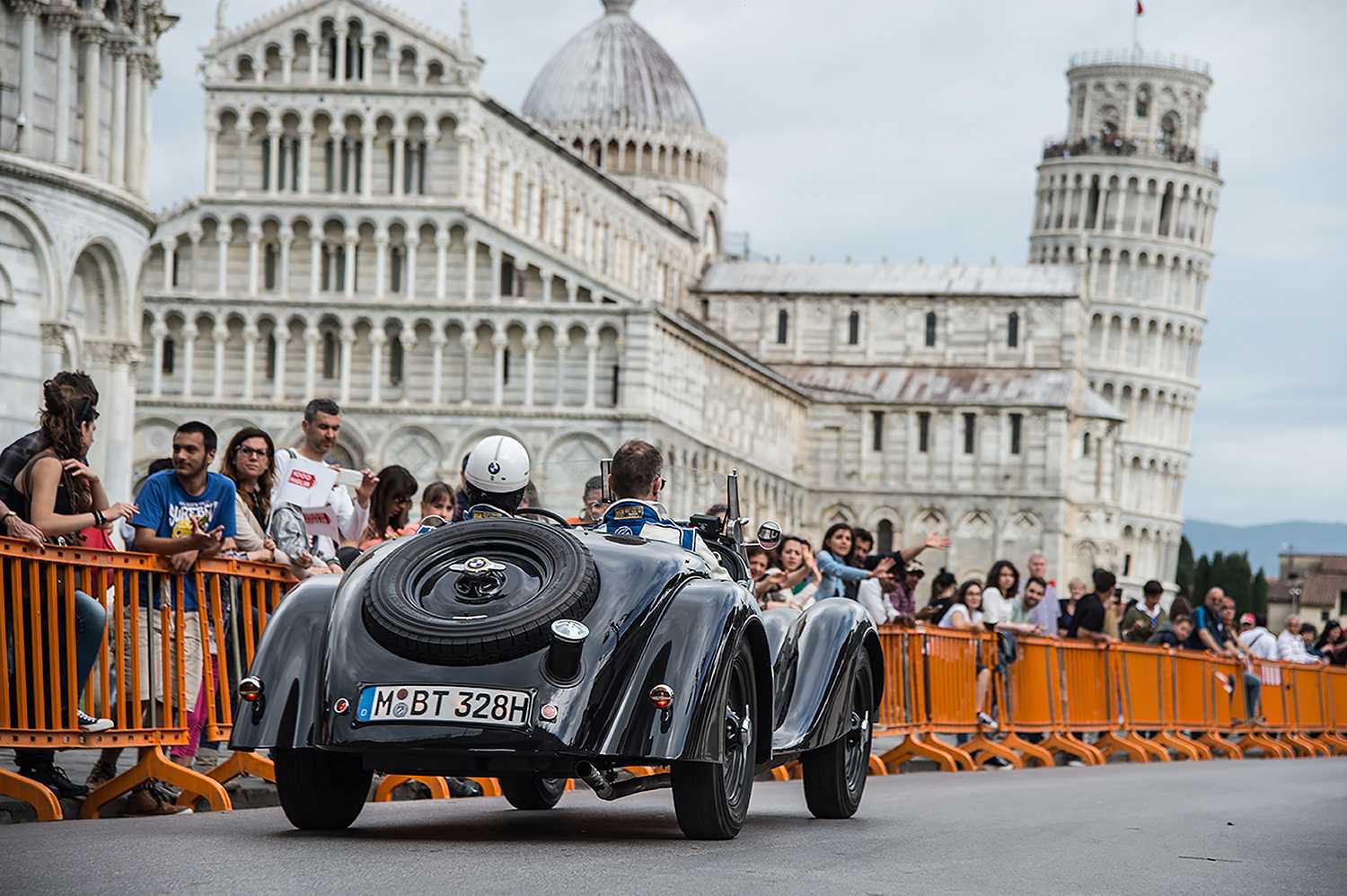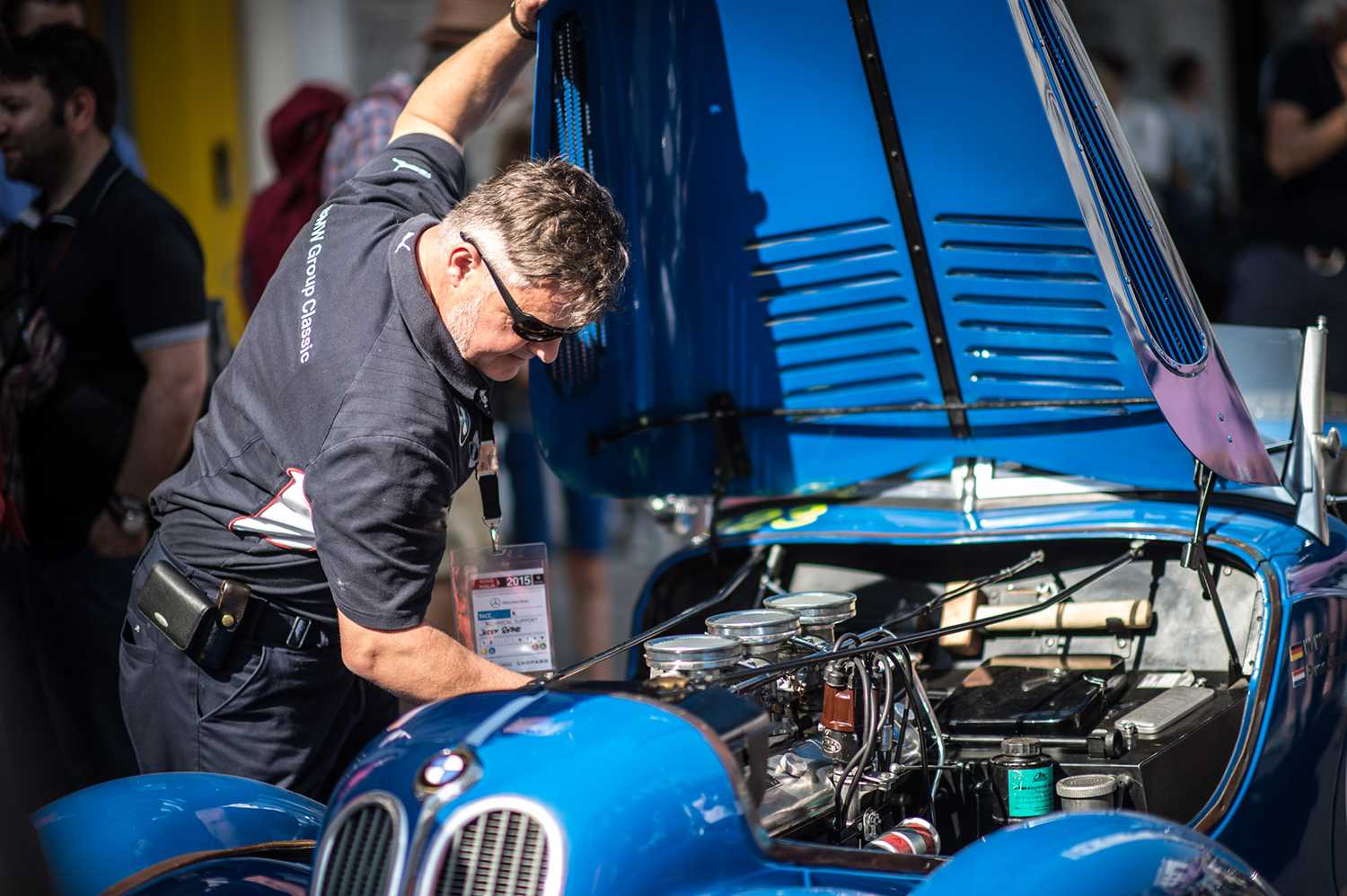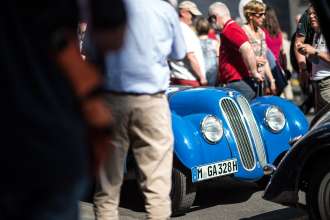It’s the taking part that counts, suggested the founder of the modern Olympic Games. And just as competing in the Olympics is the ultimate goal for an athlete, so lining up for the Mille Miglia is the stuff of dreams for classic car enthusiasts. 1,000 miles (approx. 1,600 kilometres) over Italy’s most bewitching roads: what more could you wish for? Tradition dictates that the “Mille” starts out in Brescia and takes a preselected route through picturesque towns and villages to Rome, where the field make a sharp turn north and head back to Brescia.
The original Mille Miglia took place from 1927 to 1957 and was one of the world’s most important long-distance races. Was it the taking part that counted? Don’t bet on it. As in the ancient Olympics, the Mille Miglia was all about the winning in those early days. Stirling Moss and his navigator Denis Jenkinson certainly took that message on board, securing themselves a place in motor sport immortality with an incredible performance in the 1955 edition of the race. The British pairing guided their Mercedes 300 SLR around the 1,000-mile course in just 10 hours, 7 minutes and 48 seconds, in the process setting an average speed of almost 160 km/h (99 mph) that beggared belief given that it was set over the ordinary public roads of 1950s Italy. One highlight of this year’s Mille Miglia saw Stirling Moss, now 85 years old, setting back out onto the course in his winning car from 1955 exactly 60 years on from that historic victory. The only driver to complete the original incarnation of this fabled event more quickly than the Briton was Fritz Huschke von Hanstein who, in 1940, teamed up with navigator Walter Bäumer in a BMW 328 Touring Coupé to secure the win in 8 hours, 54 minutes and 46 seconds. However, that year the race took place on a shortened course which – in response to the imminent war threat – was remodelled into a triangle of straight roads between Brescia, Cremona and Mantua that the cars had to lap several times. In 2010, driving the very BMW 328 Touring Coupé that won the 1940 Mille Miglia, Giuliano Cané and navigator Lucia Galliani added overall victory in the modern version of the classic race to that achieved 70 years earlier – the only time such a double has ever been achieved.
The Mille Miglia was brought back to life in 1977 by the Automobile Club di Brescia. Only cars which competed in the original version of the race (or were at least eligible to do so) can be entered for the field. The rekindled event quickly became one of the most important dates on the classic car calendar. Although the number of participants has increased at frequent intervals over the years, the number of people applying for a place on the starting line remains many times higher than those ultimately accepted. It is considered an honour to be involved in the Mille Miglia at all. But today, many are not just there to take part; they have winning in mind. Not that the event nowadays is a race as such, where going as fast as possible would be the order of the day. Instead, the modern-day Mille is a regularity trial, which requires drivers to keep their speed at a very precise level and to cross the finish line of the individual stages within a hundredth of a second of a set time. There are dozens of time checks over each of the four days, and those with serious designs on victory have little time to admire the beautiful countryside. Should you fail to hit the target time when you cross the line, however, the taking part will have to be the most important thing after all.
Small changes are made to the route every year; the event now stretches over four days and the 2015 Mille has added around 100 kilometres to the total distance. Not that many – if any – of the participants are likely to object.
An impressive line-up of over 450 cars built between 1925 and 1957 pulled away from the start line on 14 May 2015 to scale the heights of the classic car world. The action began in Brescia early in the afternoon of the opening day, and the cars were greeted by a carnival atmosphere as they thundered through the old town. From there, they headed out onto the road to Lake Garda, where they drove up the strip of land jutting out into the lake to Sirmione and then back again. This was an ideal place for spectators to stand as all the cars passed them twice in quick succession. The next stage of the route was to Verona, where the drivers skirted the world-renowned Arena di Verona before progressing through the Po valley and on to Ferrara and Ravenna. As dusk approached, the Mille powered on. Fast stages on country roads swapped centre stage with slower passages through towns and villages – where it isn’t unknown for drivers to be handed small packages of local specialities.
It was past 10.00 p.m. by the time the first cars crossed the finish line for the day’s stage in Rimini, where the hustle and bustle continued long into the night. For first-timers, the Mille might have seemed like a walk in the park at this point in proceedings, with the following days promising more of the same. But any beginner’s innocence was soon dispelled. The cars resumed their journey on Day 2 at 6.00 a.m., as ever at 20-second intervals. Given the number of participants, it can take two-and-a-half hours for all the cars to get on their way – much to the delight of the assembled spectators. And of those there are many thousands here in car-mad Italy.
One of many highlights along the 1,600-kilometre route – that is, 1,700 kilometres this year – was the defiant presence of San Marino, a tiny republic perched on a rock surrounded by Italy on all sides. The journey there was riddled with tricky scoring trials, some of which even overlapped. If you wanted to be competitive here, you needed to have your car under the deftest of control, and the navigators had to ensure their calculations were spot on. The route now led south through less well-trodden stretches of the Adriatic coastline and then inland to the Apennines. At times the road rose up beyond the treeline; indeed, some years the Mille Miglia convoy has been greeted by metre-high banks of snow as it made its way through central Italy in the middle of May.
Since the whole route was lined by fans, getting lost really wasn’t an issue; if there were people standing by the side of the road, that’s where you needed to go. Schoolchildren were taken out to watch the cars as they roared past, the kids waving from the roadside as carnival mode maintained its fervour. 1,600 kilometres (plus a little) spread over four days may not sound like anything extreme, but the route followed country roads – of the most alluring variety, but certainly not the fastest – all the way. There were a whole host of scoring trials which slowed things down, and then there were all those roads through towns and villages in which the drivers could introduce themselves and their cars and show their appreciation to the fans. The days behind the wheel were long and hard, then, but also extremely engaging.
The finish on Day 2 was in Rome. Here, again, the cars were welcomed by thousands of cheering fans as they poured into the Eternal City well into the early hours. This is when the unsung heroes of the Mille Miglia went to work, out of sight. The majority of participants had mechanics with them, but only now could they go about their business. Where things were running smoothly, all that was required was a simple inspection. But in other cases, making sure a highly stressed historic machine was ready to negotiate the next set of stages the following day proved to be a rather lengthier process – there was nothing for it but to keep the spanners twirling until dawn. On the two main days of the Mille Miglia, the Friday and Saturday, drivers and navigators spent up to 16 hours behind the wheel or road atlas respectively. All of which left time for little more than 11 or 12 hours of recuperative sleep in total over the three nights on the road. The drivers may not have been able to get their heads down for long, but at least they could do so at normal sleeping times. The main working hours for most of the mechanics, meanwhile, began when their car crossed the finish line and finished when it was in suitable shape again for the next day.
The first car roared off the line on Saturday morning at six o’clock. This year, the return leg of the Mille led the drivers from Rome via Viterbo and Radicofani into the rolling hills of Tuscany. One of many highlights along the way was the passage through Siena, where the spectators welcomed the cars into the centre of the famous Piazza del Campo with a guard of honour. From there, it was on through Tuscany, via Pisa and the small, picture-postcard town of Lucca, to Parma in the Emilia-Romagna region, accompanied – as always – by the motorcycle teams laid on by the Italian police. These outriders provided safe passage for the Mille and ensured that the classic cars got a reasonably clear run of it. Another set of heroes, then – just rather more visible this time.
On Sunday, the final and shortest stage of the event took the cars back to Brescia via Bergamo. Speeds seemed to climb again at this point. The roads here in the Po valley were mostly straight, and the the hills and valleys had mainly been left behind. The cars looked a little like they’d been propelled on their way by homesickness and were getting quicker all the time – give or take the odd time check…
At midday a huge festival sparked into life to welcome the cars home. And suddenly it was all over. All 1,000 miles – plus a few extra – had been covered, the strains and exertions were quickly forgotten, and somehow it had all gone by a bit too fast. There was still the winner’s ceremony, of course, but that was of little consequence to most of those present. The pinnacle of classic motor sport had been reached, and it was the taking part that was important.
As soon as one Mille Miglia ends, though, the next is just around the corner. Almost all of this year’s participants have come back for more – and that includes the many helpers, mechanics and police motorcycle outriders. The days may be long and the nights short, but they do not deter.
